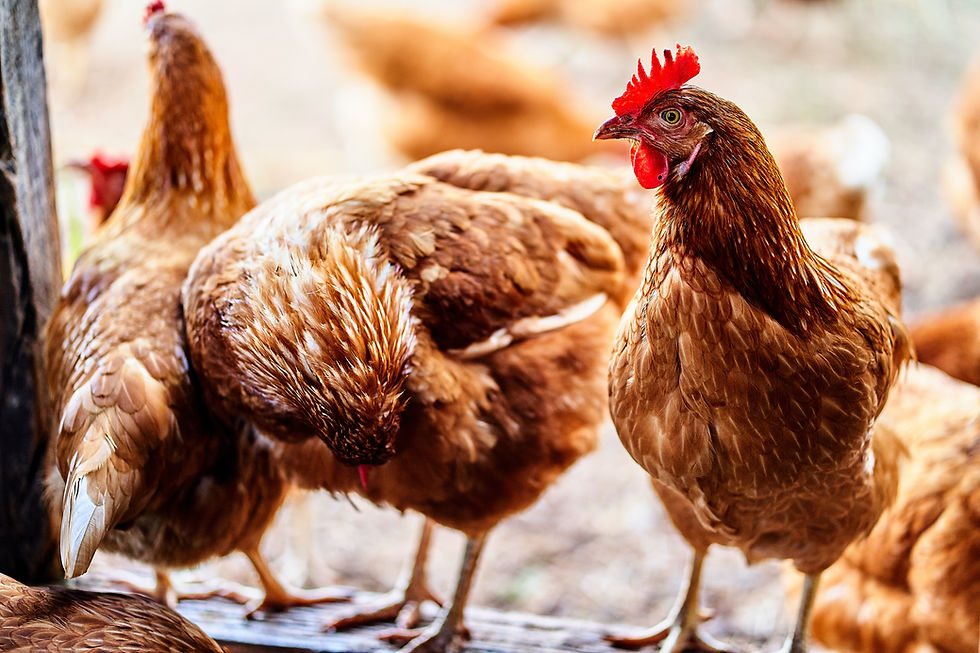Coloring Easter Eggs with Natural Dyes
- rachaelwade28
- Mar 29
- 2 min read
Updated: Mar 30

Natural Egg Dyes: How to Color Easter Eggs with Herbs, Fruits, and Vegetables
Easter egg dying is a fun family friendly tradition, but many store-bought dyes contain artificial chemicals that may not be the best for your family or the environment. Luckily, nature provides us with vibrant, chemical-free alternatives that create beautifully colored eggs using ingredients from your kitchen. In this guide, we'll show you how to make natural egg dyes using herbs, fruits, and vegetables for an eco-friendly Easter celebration.
Why Choose Natural Easter Egg Dyes?
Natural egg dyes are not only safer but also add a rustic, organic beauty to your Easter eggs. Here are a few reasons to switch to natural dying:
Non-toxic and safe – No synthetic dyes or chemicals.
Eco-friendly – Uses biodegradable ingredients instead of synthetic colorants.
Unique, earthy colors – Natural dyes create soft, beautiful hues with a marbled effect.
Fun science experiment – A great hands-on activity for kids to learn about natural pigments.
Ingredients for Natural Egg Dyes
Different plants and food scraps create a range of stunning colors. Here's what to use in place of store-bought food coloring:
Red/Pink – Beets, hibiscus tea, red onion skins
Orange – Yellow onion skins
Yellow – Turmeric, chamomile tea, orange peels
Green – Spinach, parsley, green tea
Blue – Red cabbage (turns blue when mixed with baking soda)
Purple – Blackberries, blueberries, grape juice
Brown/Tan – Coffee, black tea
How to Make Natural Egg Dyes
Follow these simple steps to create your own natural Easter egg dyes:
Prepare the Eggs: Use white or brown eggs (white eggs will show brighter colors). Hard-boil the eggs and let them cool completely before dying.
Make the Dye Bath: Add 2 cups of water and 1-2 cups of your chosen dying ingredient to a pot. Bring to a boil, then reduce heat and let it simmer for 15-30 minutes. The longer it simmers, the deeper the color will be.
Strain and Add Vinegar: Strain out the solids, then add 1 tablespoon of white vinegar per cup of liquid. This helps set the dye.
Dye the Eggs: Place eggs in the dye bath. Let them sit for at least 30 minutes. For richer colors, leave them soaking in the fridge overnight.
Dry and Polish: Remove eggs and let them dry on a rack or paper towel. For a glossy finish, rub them with a little coconut or olive oil.
Tips for the Best Results
Layering colors – Dip an egg in one dye, let it dry, then dip it in another color for a marbled effect.
Patterns and designs – Wrap eggs with rubber bands, leaves, or flowers before dying for unique designs.
Experiment – Different brands and types of produce may yield slightly different results, so have fun with it!
Final Thoughts
Dying Easter eggs with natural ingredients is a wonderful way to celebrate the season while being kind to the environment. Whether you're using bright turmeric, deep red cabbage, or rich coffee hues, these chemical-free alternatives bring a touch of nature to your holiday traditions.
Have you tried natural egg dying? Share your favorite color combinations and techniques!







Comments